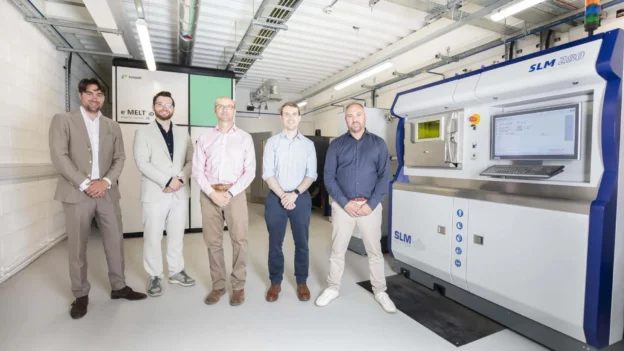The development of customized components for future fusion power plants has taken a firm step forward in the United Kingdom. The Atomic Energy Authority (UKAEA) has launched two complementary additive manufacturing technologies that could transform the production of complex parts exposed to extreme conditions.
Two technologies, one goal
UKAEA’s new Central Support Facility (CSF) integrates two key systems. On the one hand, the eMELT printer with electron-beam technology to fuse tungsten on metals such as stainless steel, Eurofer 97 and copper alloys. On the other, the SLM280 selective laser manufacturing system, manufactured by Nikon SLM and supplied by Kingsbury Machine Tools, is aimed at scanning complex geometries and materials.
Both machines allow the production of plasma-coated components, which are essential to withstand the high temperatures and intense magnetic fields commonly found in fusion reactors.
3D printing: the ally of clean energy
Roy Marshall, head of manufacturing and facilities at UKAEA, noted that these machines will allow components to be printed on an industrial scale. This paves the way for more cost-effective and precise manufacturing, decreasing the need for traditional processes such as welding.
Additive manufacturing offers distinct advantages for an industry that requires complex designs in small series. As fusion plants evolve, each will present unique characteristics that demand customized solutions.
The use of tungsten, a key material for its heat and radiation resistance, stands out in this effort. Its application on copper-chromium-zirconium or specialized steel substrates aims to extend component life.
Companies such as Freemelt and Nikon SLM also play an important role in this commitment to advanced manufacturing. This technological integration in a single facility is a first for the industry, reinforcing the UK’s leadership in sustainable energy solutions.
The first experiments are already underway. The properties of materials manufactured using these technologies are being evaluated, with a special focus on the adhesion of tungsten layers. This experimental phase will be key to scaling up to continuous production of parts to meet the operational challenges of the future melting plants.
Follow us on social networks and don’t miss any of our publications!
YouTube LinkedIn Facebook Instagram X (Twitter) TikTok
Source and photo: UKAEA

